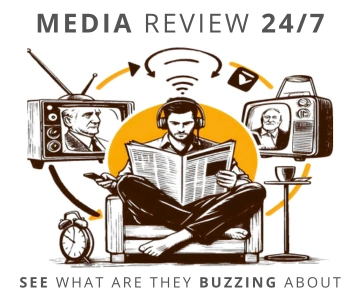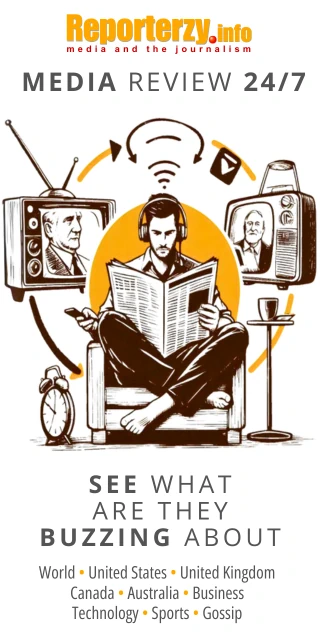 illustration: bing.com/create
illustration: bing.com/createThe Silver Generation, or people aged 50+, is a demographic often perceived by marketers as less digitally active. Common stereotypes suggested that most of their time is spent watching television, with the internet being a medium too modern and complex for them. However, the 2024 report by IQS reveals a different reality. Silvers not only use the internet but actively consume video content, with 46% of respondents doing so daily.
YouTube Leading Among Video Platforms
YouTube emerged as the unrivaled leader among video platforms for people 50+. A full 77% of silvers surveyed identified YouTube as their primary online source for video content. Following were Facebook (65%), news portals (46%), and VOD platforms like Netflix and Player (33%). Surprisingly, the older generation actively seeks professional, educational, and entertainment content, creating vast potential for content creators and marketers.
Marcin Pyć, Head of Network Management at Lifetube, notes that while silvers are one of the largest groups on YouTube, there is still a lack of content targeted directly at them. Channels dedicated to this age group are still rare, meaning creators have great opportunities to develop valuable, tailored materials.
Changing Content Consumption Habits
One of the report`s key findings is the gradual shift of the Silver Generation from traditional television to the internet. A total of 46% of respondents stated that their online activity has increased over the past three years at the expense of television time. This significant change should prompt companies and marketers to shift some of their advertising efforts to online platforms like YouTube to reach this growing audience.
Joanna Adamiak, PR expert and CEO of Face it! agency, emphasizes that more companies are recognizing the internet`s potential in reaching the older generation. Once seen as technologically excluded, silvers now actively use social media and digital communication tools. As a result, online campaigns are becoming more effective, authentic, and precisely aligned with the needs of this consumer group.
Diversity of Content is Key to Success
Although older, the Silver Generation exhibits a wide range of interests. The report found that silvers` most-watched content includes news and information (68%), educational and instructional videos (47%), and music content (45%). The high popularity of educational and informational materials indicates a demand for valuable, professional content that meets their needs and interests.
Beata Borucka, known as “Wise Grandma” and the biggest silver influencer in Poland, points out that mature viewers seek content suited to their needs, eagerly use tips and recommendations, and value the opportunity for interaction. Thanks to the internet, silvers can comment, discuss, and share their views, which gives them a sense of influence over reality and a voice in public discourse.
Online Advertising and Online Shopping
The Silver Generation’s growing internet activity also directly impacts their shopping preferences. More than half of those surveyed (54%) reported buying a product they saw advertised online. Interestingly, silvers pay special attention to price and detailed product descriptions (71% and 67% of respondents, respectively). Other key factors include seeing the product in use (50%) and highlighting the benefits of purchase (33%).
Izabela Wojciuk, Marketing Director at Biowen, notes that the Silver Generation not only shops online but is also increasingly guided by expert and influencer recommendations. The use of social media platforms and creator-generated content is becoming essential in communicating with this group, which seeks valuable content and is increasingly resistant to generic ads in traditional media.
Insights for Marketers and Content Creators
The IQS report provides valuable insights for companies and marketers looking to reach the Silver Generation effectively. The study’s findings show that stereotypes about this group’s lack of digital activity are outdated. Silvers not only spend time online but actively consume video content, have favorite platforms, and even shop online.
For content creators, this means creating materials that cater to the diverse needs and interests of this group. It’s worth investing in educational, informational, and entertaining content that will engage and attract mature viewers. For marketers, it’s essential to understand that the internet is becoming an increasingly important communication channel with the Silver Generation, which should prompt them to review their marketing strategies and increase budgets for online activities.
The report’s conclusions highlight the growing potential of the online content and advertising market targeted at silvers. This is a group that not only wants to but can actively participate in the digital world, and its importance will only grow in the coming years.
The full report “YouTube: The New TV for Silvers” can be downloaded at:
https://www.lifetube.pl/lp/raport-youtube-pokolenie-silver
COMMERCIAL BREAK
New articles in section Media industry
Advertising market 2025. Poland, Europe and the World
Marcin Grządka
The global advertising market is growing by 8.8% in 2025 and will reach a value of 1.14 trillion dollars. The industry result in Europe records slightly lower dynamics, at the level of 5.8%. In this comparison, Poland performs clearly above the average. We will record an increase of 8.9% this year and a value of 18.56 billion PLN - estimates WPP Media in the annual report "This Year Next Year".
The print media market 2025. Three global trends
Krzysztof Fiedorek
The market value is 359.53 billion dollars, yet the erosion is visible to the naked eye. The decline for newspapers will amount to -2.3 percent. Despite this, print retains strength: it generates 76 percent of subscription revenues and enjoys 82 percent consumer trust. The future of the industry is defined by hybrid strategies and niche specialization.
Journalism in the age of AI. Why people prefer humans over machines
Krzysztof Fiedorek
Only 12% of people accept news created solely by AI, while 62% prefer those written by humans. At the same time, only 19% notice labels indicating the use of artificial intelligence, while younger audiences ask AI to explain the content to them. These are the findings of the Reuters Institute report on artificial intelligence in media.
See articles on a similar topic:
"No One Should Know the Truth" [DOCUMENTARY FILM]
BARD
According to the Belarusian Association of Journalists, around 554 journalist detentions occurred in Belarus between August 2020 and July 2023. Criminal charges were brought against 73 media workers, and 33 of them remain in prison to this day.
E-commerce Forecasts in Poland. Trends for 2024 and Beyond
Krzysztof Fiedorek
In 2024, e-commerce in Poland is reaching new heights, with an increasing number of consumers regularly shopping online. The report "E-shopping Habits of Poles 2024," prepared by SAMOSEO analysts, analyzes current trends and forecasts the industry's near future.
Numbers Stations in Radio. For Puzzle and Cryptography Enthusiasts
Krzysztof Fiedorek
They broadcast seemingly meaningless strings of numbers and letters, sometimes short, encrypted messages. Some even play music between coded transmissions or broadcast propaganda. For over a hundred years, number stations have puzzled radio enthusiasts and mystery hunters. What do we know about them?
YouTube redefines viewer engagement. Goodbye to returning viewers
KFi
As many as 30% of internet users now turn to YouTube as their main news source, and 65% consume news in video form. Now the platform is shaking things up. Reach still matters, but engagement is what really counts.






























